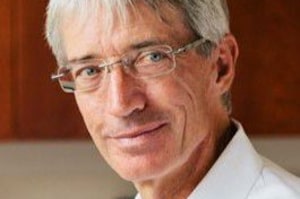iStockphoto/Getty Images/iStockphoto
Right now is proving to be the most challenging time in my career for building portfolios. Safety is expensive and not so safe, and growth is tough to come by.
Keep in mind, I started in the business as a stock analyst in 1983, which was at the beginning of the great bull market in bonds and stocks, so I've been blessed.
Blessed with steadily declining inflation and interest rates, which served to push all asset prices higher.
When rates dropped, bond prices rose and companies' earnings and dividends became more valuable.
What made it such a long bull run was the starting values – mid-teens interest rates and rock-bottom valuations on stocks and real estate – and a healthy skepticism that inflation would come back. Bond investors were decimated by soaring inflation in the years prior to 1981 and were in no mood to have it happen again, so while yields were dropping, they remained well above inflation.
The jig is up
Unfortunately, inflation and interest rates are now nearing zero and asset prices have caught up.
In many cases, bonds are trading at yields that don't even offset inflation. A five-year Government of Canada bond yields 0.9 per cent and Scotiabank can raise money with a similar term at 2.2 per cent. Risk-free return has become return-free risk.
Stocks are also reflecting near-zero rates, although given their cyclicality and volatility, it's less clear as to where they are in their valuation range. Price-to-earnings multiples and other metrics look okay, but only if interest rates stay low.
As for Canadian real estate, the cap rates on income-producing properties are deep into single digits.
In both of my investment roles – building portfolios for individual clients and chairing the investment committee of the Vancouver Foundation – the toughest question my colleagues and I face is, should we own any bonds at all? Will they help diversify portfolios? Will they provide a reasonable return over the long term?
Diversification
Even with interest rates where they are, government bonds are still a safe haven when investors are running for cover. It's hard to see how rates can go lower, but when the world is in a tizzy about something, they can and will. As we've seen in Europe, they can even go negative for a period of time.
The reality is, long-term bonds match up well with a retiree or foundation's liabilities (i.e., future spending needs). They move in lockstep. But it's important to note that the counterbalance that bonds provide is not as reliable and impactful as it used to be. Previously, when stock markets were taking a hit, bonds went up automatically (i.e., yields dropped). But in August, when volatility jumped and stock markets were down 4 per cent, Government of Canada bonds also had a negative return (minus 1 per cent).
Retirement income
As for generating inflation-fighting returns, it's hard to see how bonds will do the job. A reliable predictor of future bond returns is the current yield. Today, that means a real return (after inflation) around zero.
There will be periods when bond prices rise due to interest-rate declines and/or events in the corporate market, but their long-term returns are anchored by low yields.
Find a balance
All of this has led us to take a balanced approach. In advising clients, we don't suggest eliminating bonds, but rather holding less than their plan calls for.
Our Founders Fund illustrates the point. It would normally hold 35 to 40 per cent in bonds, but is currently at 24 per cent, with a focus on provincial and corporate bonds. As a result, the cash level is relatively high at 15 per cent.
The fund has a full allocation to stocks, including all sizes of companies and most industries and geographies. Looking across the investment landscape, stocks look to be the most reasonably priced asset class.
I don't think there's any way around it – to keep from losing ground to inflation, retirees and foundations have to own more stocks than they may feel comfortable with. As a consequence, they'll have to learn to live with higher short-term volatility.
But nobody said investing was easy.
Tom Bradley is president of Steadyhand Investment Funds Inc.
 Tom Bradley
Tom Bradley